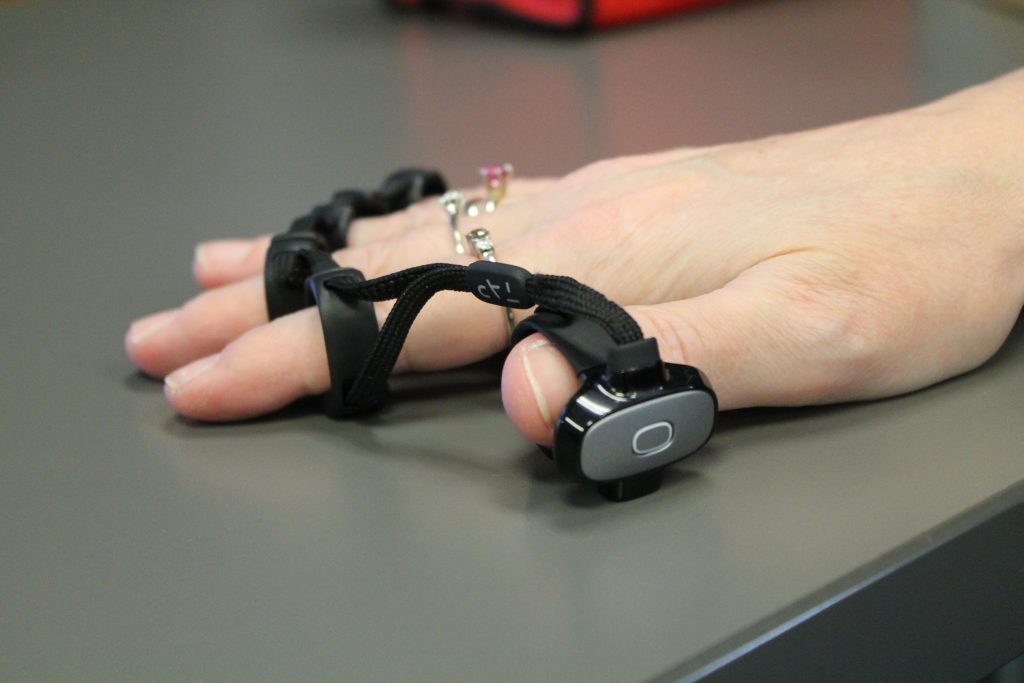Part 2: Defining Assistive Technologies
Introduction
In seeking comprehensive definitions, it is often worth turning to Wikipedia. Wikipedia’s definition of Assistive Technology is as follows:
“Assistive Technology’ broadly spells out a continuum of tools, strategies, and services that match a person’s needs, abilities and tasks, and includes evaluation of the needs of an individual with a disability, a functional evaluation of the individual in the individual’s customary environment, and the selection, designing, fitting, customization, adaption, application, maintenance, repair, and replacement of assistive technology services, and their coordination with the existing education and rehabilitation plans and programs for inclusive development.” [Wikipedia]
A shorter definition is that Assistive technology is equipment or systems that maintain or improve the functional capabilities of those with disabilities. [Why Tech in Education Must Become More Accessible?]
Of course, all technologies are assistive. They all help people use their varied abilities to do the things that they want or need to do, from commuting to cooking and communicating. And the same applies in education and learning be it in school or for virtual mobilities. As mainstream technologies increasingly embrace multiple sensory modalities – with interfaces integrating touch, sound and vision – there may develop greater flexibility to decide the format in which information is received according to choice, preferences and abilities to communicate. This is further blurring the boundary between assistive and mainstream technologies.
We can identify four main groups of Assistive Technologies.
Computer access devices
These are increasingly built into the operating systems as accessibility options for computers and mobile devices. They include alternative pointing devices, keyboards, other input devices like eye-gaze or switches; Impairment based support, such as technology to support visual impairment or hearing impairment e.g. screen readers, amplifiers etc; communication aids, also known as AAC – Alternative Augmentative Communication and VOCA – Voice Output Communication Aid.
Voice and speech aids like voice synthesizers, speech-recognition software, and text-to-speech applications make it easier for students with speech impediments or those with visual impairment to participate more fully in any education setting [Jisc]
Audio Aids
This broad category of assistive technology aids includes sound amplification tools; alerting devices that use flashing lights or icons on the computer screen rather than sounds to signal users; close-captioning for videos; TTY (TDD) also known as Telecommunication for the Deaf; phones enabled with Voice Carry-Over (VCO) technologies that allow children and youth with hearing difficulties to communicate over the phone with their own voice.

For those who have a hard time hearing, sound amplification tools and alert devices that use flashing lights or icons instead of sounds can make it easier to absorb the information they need and stay on track with the other students.
Students who have trouble reading due to a learning disability may excel and process information more effectively if they receive the content in audio form. Additionally, they may have a much easier time showing what they have learned by discussing it in monitored group settings or by giving an oral presentation Students who have trouble reading due to a learning disability may excel and process information more effectively if they receive the content in audio form. Additionally, they may have a much easier time showing what they have learned by discussing it in monitored group settings or by giving an oral presentation. [University of Wisconsin]
Visual aids
Screen magnification software, devices that turn screen text into Braille can help students who are fully blind or with other visual impairments. Screen reader software will dictate text on a computer to the student. A host of braille writing and refreshable reading display equipment exists so students can read (and write) silently. Screen and video magnifiers enlarge text to assist students with mild visual impairment. Various adaptive keyboards help students develop hands-free typing skills. Computer programs and apps for tablets come equipped with gesture-based commands and text-to-speech modes to facilitate non-visual use [Everyday Sight].
Speech-Recognition software can assist those with visual impairment, or with physical limitations that prevent them from typing on a keyboard. Text-to-speech devices (mobile and otherwise) can help learners compose their assignments. Whilst these used to be separate programs, this functionality is increasing baked into operating systems.
Text-to-Speech software helps those with visual impairments by allowing them to listen to the text that appears on a computer screen. This is a huge improvement over Braille because once the program is installed on the computer, it can read anything on the screen, no matter what format it is in (for example, pdf or website) with no waiting for a Braille translation. This enables students to participate in online activities, use email and text, and have immediate access to course materials.
Physical aids
Devices and equipment such as audiobooks, electric wheelchairs, and keyboard adaptors can make it easier for those with mobility issues to complete their schoolwork and access their environment. Wheelchairs, prosthetics, and other such equipment can help students with mobility impairments. Adaptive interfaces and structural accommodations of many kinds can be used to help students complete everyday activities, from special pencil grips for writing to the ramps, handrails, elevators, and automatic door openers found in public buildings [Jisc].

Environmental Control Systems (ECS) for home automation (e.g. media control, lights, heat, windows, doors, blinds etc.) provide a greater degree of autonomy for people with physical disabilities
Word processing and grammatical tools
There are a growing number of literacy and numeracy support tools (Read and Write, Dragon, mind mapping tools etc.) For slower learners, tools that assist with editing and spell checking can help them keep up with their learning and work, so they aren’t falling behind other students.
Virtual and Augmented Reality
Even Virtual Reality (VR) devices can help those with disabilities experience the same things as other students. If a student can’t attend a field trip, for example, they can see and experience the same places as the other students through immersive VR. While pre-pandemic cultural contents were based on face-to-face experience, the virtual world-centered metaverse emerged as a notable alternative, offering a similar experience as face-to-face encounters as the coronavirus and a multitude of its variants have changed the way people interact [Korea Herald]. With a growing recognition of neurodiversity and multiple abilities this means rethinking both human-computer interfaces and the meaning of intelligence in artificial intelligence.” The core components of the vision of the Metaverse could offer many opportunities to extend the range of human experience available to many people. Mixing virtual reality with gamification, social networking, or culture can do a lot for particular people in particular circumstances.
Links
Wikipedia, Assistive Technology, https://en.wikipedia.org/wiki/Assistive_technology, accessed 26 April, 2022
Why Tech in Education Must Become More Accessible, https://www.emergingedtech.com/2021/11/why-tech-in-education-must-become-more-accessible/ , Accessed 26 April, 2022
Jisc (2014) Guide: Using assistive and accessible technology in teaching and learning, https://www.jisc.ac.uk/guides/using-assistive-and-accessible-technology-in-teaching-and-learning/built-in-productivity-tools, Accessed 26 April, 2022
Everyday Sight (2021) 26 Best Apps for the Visually Impaired [2021 Edition], https://www.everydaysight.com/best-apps-for-visually-impaired/, Accessed 26 April, 2022
Korea Herald (January 3, 2022) Metaverse rises to Cultural Mainstream, https://news.koreaherald.com/view.php?ud=20220103000633&np=5&mp=1, Accessed 26 April, 2022
Jisc (2021) Assistive Technology for all, http://coronavirus.jiscinvolve.org/wp/2020/03/25/assistive-technology-for-all/, Accessed 26 April, 2022
University of Wisconsin, What is the role of Asistive Technology in Special education, https://online.uwsuper.edu/degrees/education/msed/special-education/assistive-technology-in-special-ed/, Accessed 26 April, 2022
